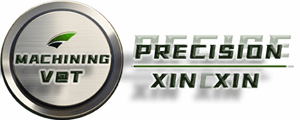Semiconductor etching stands at the forefront of semiconductor fabrication, playing a pivotal role in crafting the intricate patterns essential for electronic devices.
1. Semiconductor Etching Equipment:
1.1 LDI High-Precision Exposure Machine: The Laser Direct Imaging (LDI) high-precision exposure machine is an indispensable tool in semiconductor fabrication. Utilizing laser technology, it precisely exposes photoresist-coated semiconductor wafers, defining intricate patterns with unparalleled accuracy. Leading manufacturers like Ultratech (www.ultratech.com) specialize in providing cutting-edge LDI machines, ensuring optimal resolution and reliability.
1.2 Wet Chemical Etching Equipment: Wet chemical etching involves immersing semiconductor wafers in a chemical solution to selectively remove material. Key equipment includes:
- Etching Baths: Tanks designed for controlled immersion of wafers in etchant solutions.
- Spray Etching Systems: Utilize nozzles to spray etchant solutions onto wafers for uniform material removal.
Leading manufacturers such as Lam Research (www.lamresearch.com) offer wet etching systems, incorporating features for precise control over etching parameters.
1.3 Dry Etching Systems: Dry etching, encompassing techniques like Reactive Ion Etching (RIE) and plasma etching, utilizes gases and plasmas for material removal. Equipment includes:
- RIE Chambers: Specialized chambers where controlled plasma reactions occur for precise material removal.
- Plasma Etching Systems: Systems generating and sustaining plasma for efficient dry etching.
Oxford Instruments (www.oxinst.com) is a reputable manufacturer providing advanced dry etching solutions catering to diverse semiconductor materials.
2. Common Etchants in Semiconductor Etching:
Analyzing common etchants is essential for understanding their applications and parameters. The following table summarizes some frequently used etchants:
| Etchant | Composition | Selectivity | Temperature (°C) | Etch Rate (nm/min) |
|---|---|---|---|---|
| Buffered HF | HF + NH4F | High | Ambient | ~1 – 10 |
| Piranha Solution | H2SO4 + H2O2 | Moderate | Ambient | Variable |
| KOH | KOH | High | ~50 – 80 | ~50 – 100 |
| SF6 Plasma | SF6 + O2 | High | ~50 – 100 | ~10 – 100 |
3. Basic Applications of Semiconductor Etching:
Semiconductor etching finds diverse applications across various industries:
3.1 Glass Etching: Microstructuring glass surfaces for applications in optics, microelectronics, and sensor technologies.
3.2 Silicon Wafer Etching: Critical for the production of integrated circuits, where precise patterns define the functionality of electronic components.
3.3 MEMS Fabrication: Semiconductor etching enables the creation of Micro-Electro-Mechanical Systems (MEMS), allowing for the integration of miniature mechanical components onto semiconductor wafers.
Semiconductor Etching Process Flow:
3.1 Photoresist Application: A thin layer of photoresist is uniformly applied to the semiconductor wafer.
3.2 Exposure: The LDI high-precision exposure machine selectively exposes the photoresist, defining intricate patterns based on the desired circuitry.(PCB Exposure machine)
3.3 Development: An exposed photoresist is developed, revealing the pattern on the semiconductor surface.(PCB Development machine)
3.4 Etching: The semiconductor wafer undergoes wet or dry etching, selectively removing material according to the developed pattern, ensuring precision in circuit formation.(PCB etching machine)
3.5 Resist Stripping: Any remaining photoresist is meticulously removed, leaving behind the etched semiconductor pattern ready for subsequent processing steps.(PCB Stripping Machine)
